A Conversation With Shirin Neshat (WOMEN WITHOUT MEN)
For many years, Shirin Neshat has been known in the art community for political photography and video installations about women in Iran. Her works have been displayed in some of the most prestigious museums and galleries around the world. Last year, her first narrative feature film, Women Without Men, premiered at Venice, where it won the Silver Lion award for best director. Neshat and her team had been working for over six years on the film and were completely blown away by such an esteemed honor. Since Venice, the film has continued to make the festival rounds until its recent sale to New York based company IndiePix. Women Without Men opens Friday, May 14, 2010, at the Quad and Lincoln Plaza Cinemas.
Neshat’s film is based on a novel titled Women Without Men by writer Shahrrnoush Parsipour. The story follows four female characters living in a charged pre-Islamic revolution moment in Persia. It’s a moment in time where the Persian people are fighting for their freedom and their culture while watching their country fall. The main characters—Zarin, Munis, Fakrhi, and Faezeh—are each faced with a moment that leads them through a transformation which eventually brings them together in a very magical orchard. The film’s story is told in many layers as magical realism takes over and we see what is occurring on three or four levels at once.While the women go through their personal transformation the outside world slowly pushes in until one day it arrives at their sanctuary, forcing them all to ultimate moments of revelation. Hammer to Nail caught up with director Shirin Neshat at her studio, just five days before her film’s theatrical release.
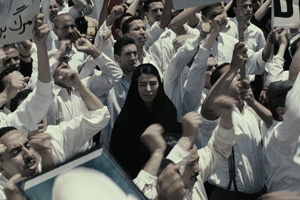 Shirin Neshat: Since its opening week I woke up at like 5:30 and I had to answer questions for something, and I realized I feeling nervous, and it’s not a good feeling and you just have to live with it. So in a way being with you is a good distraction. You work 6 years and then there is the week when it’s coming out… but hopefully it will go well.
Shirin Neshat: Since its opening week I woke up at like 5:30 and I had to answer questions for something, and I realized I feeling nervous, and it’s not a good feeling and you just have to live with it. So in a way being with you is a good distraction. You work 6 years and then there is the week when it’s coming out… but hopefully it will go well.
Hammer to Nail: It seems like it has gone well so far. Let’s talk about the title. It’s such a potent phrase.
SN: The title is the title of the novel. The producers really wanted to change the title but I insisted not to and the reason is because in the novel the stories are primarily focused on the stories of the women. In our film it is just not the women, but the political development in the country. They had a problem with that because it sounded very feminist and seemed like a misrepresentation of the film. Women Without Men immediately makes an expectation that this is a film or a novel that is women against men, or women that compete with men or hate men. It’s not about that, it’s that Ernest Hemingway wrote a book called Men Without Women and this is novelist Parsipour’s answer to that. In a way that men weren’t against women, but it was that men could not cope with women. In this film there are essentially several key male characters but the film and the novel follow the journey of the women, which intersects issues of men, but it is about the women, it’s the stories of the women and how they go about finding their idea of transformation. I felt as a tribute to the writer, most people know here by this novel, it would be very sad to change the title.
H2N: Do you feel like that title has been isolating at all for the film?
SN: I had to fight hard to keep it. I think that on one hand the title can be misleading and that people can have a very reductive reading into the film. In terms of the idea that this is a feminist film about women who are against men or something like that, but on the other hand when people see the film this discussion never comes up. People see that there are plenty of men in the film, some very negative and some very positive. It’s never been an issue after people see it, but always before.
H2N: I found it interesting that the character that comes in at the beginning of the film, the gardener, and visits the character of the prostitute Zarin. It was very symbolic, as we don’t know much about that character, but he seems very important as a catalyst for Zarin’s decision to leave the brothel.
SN: He’s mysterious. In the novel there is a gardener, and we kept that character as the gardener in the orchard, but we made him very mysterious, as the garden is very mysterious, where the female characters all end up. He had a very angelic identity; he was the man that made Zarin leave the brothel as he appeared in a magical, yet monstrous form. It’s been said that the relationship between this gardener and the prostitute Zarin reminds people of the relationship between Mary Magdalene and Jesus. There are a lot of references people find to the Garden of Eden, the garden where the characters end up, and many references people find to Christian symbolism as well. I think there are some interesting points that some people get like you, and some don’t.
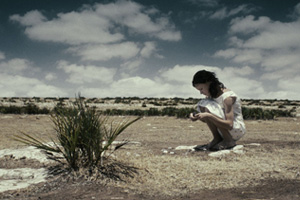 H2N: Well the orchard, the forest, the water, the hole, the dipping into the water…
H2N: Well the orchard, the forest, the water, the hole, the dipping into the water…
SN: The hole is like a rape; and an intercourse, the hole where the women climb into the garden is a feminine space. It’s also an invasion, the idea that when the women find the garden we never see the wall again until the guests arrive for the party later in the film, and then the external world invades and it becomes like a rape and things begin to fall apart. Being from Iran means being very familiar with the language of allegory and poetry. I think in this film we really employ a lot of these metaphoric and allegoric meanings.
H2N: Right. Like the dipping and cleansing in the water.
SN: The image of the cleansing of Zarin in water and the image of Munis flying are two images that have been in my subconscious since my 20s. Since I was a bad painter. I kept drawing these images. I only wish I would have kept some of them. I destroyed them all. It would be an image of a woman flying and it looked just like the opening shots to the film. And then there was the image of the woman floating in the water. This is something that I cannot analyze—it would take something who knew more than me to understand where this imagery is rooted and what it means. It’s a question of the leap for freedom into flight and cleansing and recovery, all very positive.
H2N: One of the other moments where that symbolism is very strong is where Zarin is washing herself in the bathhouse and the little boy watches her scrub herself raw. It was so poignant.
SN: It’s painful.
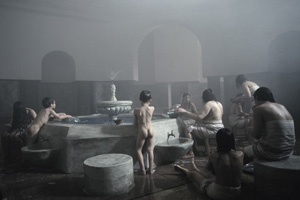 H2N: The two people in the shot, the little boy and the prostitute, created such a strong statement.
H2N: The two people in the shot, the little boy and the prostitute, created such a strong statement.
SN: For me it was the loss of innocence: the little boy saw something that would transform him forever and it was tough to shoot. We really had to emphasize to the little boy this is not real, it’s a movie, it’s fake blood. Everything was normal and then something completely shifted the energy of the bathhouse. For this boy who was just being playful he became stunned while watching this woman bathe herself so viciously. This was a moment where you lose your innocence and you’ll never recover it again.
H2N: We see all these other men politically involved, and we see the rape of Faezeh, then we see this little innocent boy in the bathhouse, so innocent, being nurtured by the women.
SN: The bathhouse scene, as difficult as it is, is one of my favorite scenes. In a way it brings the elements of beauty, eroticism, and sensuality, together with violence, horror, and pain and suffering which is I think the most realistic depiction of life. For some people it’s unbearable because they don’t want to face the pain. But the only check for reality is to be conscious of the fact that things like that do happen.
H2N: How have people in Iran reacted to the film?
SN: I got a call from my sister on the 9th of April after our LA premiere. She was with my mother and the day before they had gone to see a movie in Iran and went in to a bookstore and bought five copies of my film.
H2N: Wow.
SN: We were delighted! They made a cover in Farsi with images and an introduction. And I was like, good for Iranian people! They are way ahead of the game. Through the power of piracy it’s already distributed. I was delighted. I don’t know the reaction to the film, but my feeling is that at the worst it would create some discussion and at best it would create a dialogue about our country’s history prior to the Islamic revolution and our political history. We fought for democracy then, but also for visual history and visual memory and a sense of nostalgia of Iranian people. Some older people may see it that have not looked at themselves in that way before. It was a time when women were fashionable, when women had a choice about wearing the veil, when we listened to a certain type of music, and when we had a very sophisticated, artistic, intellectual life. The film creates a lot of nostalgia for Iranian people. The debates and disagreements could be about we overstated the communists or underrepresented the shah and things like that. In terms of artistically and culturally I feel it serves the right purpose both for the Iranians and the Westerners because it’s like we are having amnesia about Iran prior to the Islamic revolution and in the film you get to see what it was like then.
H2N: That was beautiful to see.
SN: It’s a beautiful culture, a beautiful time.
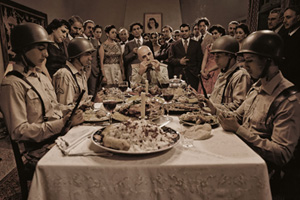 H2N: The way you all captured that time period was so detailed.
H2N: The way you all captured that time period was so detailed.
SN: We tried, the truth is that we had a very small budget and our resources were all on the outside of Iran. For example we couldn’t fly in objects or props from Iran. We basically had to create everything ourselves. We did all the political banners, and painted all the pictures. We had to work with Europeans to create the sets, and my production designer; he created all the architecture and interior design based on a lot of research. We did a lot of research on the hair and makeup and this all had to be developed within a very small budget.
H2N: The cinematography and the camera movement really created the dream-like feel and magical realism of the film.
SN: The cinematography in all my work had been very critical in a sense that it really defined the story. For example maybe for some others who are not visual artists the camera work is less important. We very carefully orchestrated every frame and the movement of the camera and the pacing of the camera. In the orchard, which represented a very sacred and mysterious space, we wanted to keep the atmosphere uncanny and foreboding, so the camera moved extremely slow. Where when we were in the city and it was very action oriented and realistic the camera moved very fast. There were ways in which the cinematographer was entirely involved in the script and he became the brain of the project in a way that the image was never separated from the actual story.
H2N: It created such a distinct mood and feeling within the orchard that carries the surreal, magical state as it unfolds.
SN: I think for some people it works, but for some people they want to get on with the story. I think as a visual artist I wanted to make sure, I mean these are elements that come from my previous work, of course in a very different way, for example the fact that in the past I could be more generous with my pacing because video installation in a gallery or museum has a different attention span. But here I had to be very conscious because I created a sense of silence and just went with the image, but at some point you had to really come back and not lose the thread of the story. So it was really about how to navigate between the elements that I brought with me but yet be careful and make sure we are embracing the language that demands a very different kind of vocabulary.
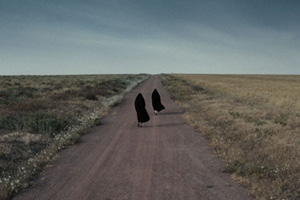 H2N: Your visual art background is very visible in the film.
H2N: Your visual art background is very visible in the film.
SN: We tried. Again, this is not an easy film. Because its not a kind of film that is like, pure entertainment or very fast. You have to come to this film not expecting a predictable film in a way that it really does pioneer its own way of storytelling. Those who only apply this film according to a conventional narrative construction are very disappointed it doesn’t work like that. But those who are somewhat open to an experiment and can let go with that idea, that’s its an allegorical film, then they might appreciate it.
H2N: In your photography, the bodies of the female characters seem to be tied so politically to what’s going on. Did that happen intentionally in the film as well?
SN: Somewhat. The bodies become a political emblem. The female body has become a battleground for men’s ideology. At times they suggest sexuality, or individuality, a sense of solidarity with the religion, against the solidarity of the religion. It’s just so interesting that women can define political ideology.
H2N: Once the film takes a magical turn as the character Munis comes back from the dead, you realize its not going to be a film based solely in realism. How did you choose when to shift from the realism into the magic realism?
SN: We decided we must start the film like that, to introduce the idea that this is one strange film, not your normal film. Once you establish the sense of allegory, from that point on, the audience is prepared, whenever you come to a magic moment they say, “Oh!” This I think was one of the most difficult tasks of this film. In the sense how to establish the style of the film, the magic, the visual, allegorical part, and have the audience understand the tension between these two.
H2N: Films told in magical realism, symbol, and allegory aren’t very common in cinema right now in America. Certain movements of art have required the audience to be open to these styles, but today, especially with film. Today there are a lot of very realistic films being made. Have you felt that difference with this film?
SN: In Europe there are more films like this one, which are experiments. But in America it’s really difficult to break through. Because its not just critics or industry people, it’s the audience, the majority of them are lazy and don’t use their imaginations very often. Partially because they have been inundated by Hollywood and stories that are purely entertainment and very simplistic and you have to think that art is an art form not purely for entertainment. I have to say, I like the idea of entertainment too, but art is something that is meant to transform you and elevate you and have a deeper impact besides just passing the time.
H2N: How have people responded here in America?
SN: The worst criticism I’ve gotten is that the film is very dark. The idea of darkness for someone who goes to see the movie is actually almost taboo. You should only go see things that make you happy? Darkness and melancholy can be a point of self reflection, a moment of illumination, I always find it extremely optimistic, I remember when I saw the film of Tarkovsky as dark and melancholic as they were, I left the cinemas transformed. I was so charged and full of life I couldn’t wait until I made another work of art because I really felt that it made me change. It changed me. That darkness is not negative; to me it goes back to more mystical ideas in a way that it’s a point of reflection. Young people don’t have a lot to say. There young, they haven’t experienced pain beyond the sociological, pain in relationships etc. Different artists in different cultures represent the culture in a way that you can’t expect an Iranian artist to paint flowers. You will expect something very dark, hopeful as well. The political and cultural reality always informs the art. And this is something for America even geographically it’s very separate from the rest of the world. It hasn’t had a lot of catastrophes other than Sept 11 or Pearl Harbor, but as a nation has been young and protected. For me it has been the opposite, which has been important and shaped my work. Sometimes artists take the pain and turn it into an asset, which can be transformative for the audience.
H2N: And it can stimulate a cathartic moment that is universal.
SN: Which unfortunately the majority of the people aren’t always after. But the question is not bout the film being entirely successful, it isn’t, of course it has a lot of flaws, but it really suggests and effort, that its going against the mainstream, and there are plenty of other artists doing that in this country but we need to help them survive and make a space for them. That infrastructure doesn’t really exist and we need to keep that open.
H2N: But your film has had success at Sundance, Venice, Toronto, etc.
SN: And now it’s also opening at Lincoln Center, and I’m shocked about that. The reviews we get are always mixed, some positive, some mixed, some very negative—this is not a film that everybody embraces or loves. We get a lot of criticism.
H2N: Your work has always been somewhat controversial right?
SN: Always. Even when I started with the very early “Women of Allah” photographs people were very suspicious of my intentions and both from the Iranian and American perspectives they were really criticizing it only later they endorsed and accepted it. With the video installations it also was not instant. I’ve never been one of those artists whose been immediately accepted. There have been a lot of doubts. I think the impact hopefully can be on the younger generations, and Iranian youth, as they look for new ways of communication and taking more classic and ancient ideas and transforming them into something contemporary. For example, our film really borrows from traditional ancient poetry and mysticism from Iran that belongs to classic Islamic, Persian tradition and literature. And yet they are completely contemporary in a way that they borrow from conceptual art from the west.
H2N: Do you have another project you are working on?
SN: If anybody after this film is willing to fund my film! I’ve just optioned another book and the contract is coming tonight and this is a book by an Albanian writer called Ismail Kadare. It’s called The Palace of Dreams. What I love about this story is that it takes the next leap for me artistically in a sense that its not an Iranian story and could be made in America but it has every metaphoric connection to Iran in terms of its political history, allegorical value, I just love it. Albania, like Iran, has been through a lot. And the way religion plays a part, the way fanaticism of the government that’s ruling controls people’s imagination and dreams in this case. I love it. I’m writing the script with someone. It’s my dream to make that film and then I’d like to continue with photography. It’s time.
-Alexandra Roxo







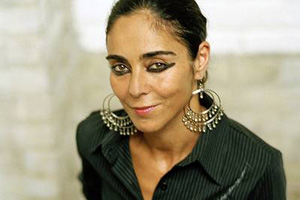

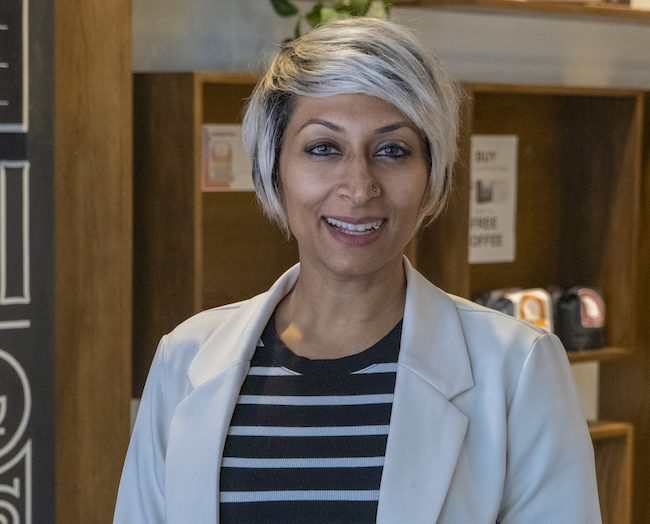



Pingback: HOME VIDEO PICKS – Hammer to Nail